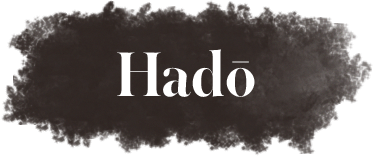FAQ

People who are curious about Hoshindo tend to have similar questions. Look below for the answers to questions you may have, or feel free to contact us for more information.
Hoshindo is the result of thousands of years dedicated towards the honey bee. Through the teachings of our lineage, practitioners cultivate a spiritual relationship with the bees and become their protectors. We are guided by a responsibility to reciprocity and take on the karmic debt accrued by the bees’ contribution of life, energy, and spirit to our patients. Gratitude is at the center of this work.
The path to becoming a Hoshindo practitioner is rigorous on the body, mind, and soul. We ask for consent from the beehive and hand pick the oldest girls who may have one to two days left of life. The process of extracting the barbed stinger is also done by hand and applied carefully on specific areas of the body while it is vibrating. The average length of a honey bee stinger is 2.5 mm in length or 0.1 inches. Under the tutelage of a Sensei, practitioners receive their board certification once they have passed a number of written and practical exams as well as submitted a graduate-level thesis. Hoshindo is currently the only apitherapy requiring a board certificate to practice.My experience includes supporting children, older adults, and everyone in between. Many people come to this work because they have not felt relief or improved from conventional healthcare. Specifically, I have supported people experiencing chronic pain, nerve damage, tick-borne illness, autoimmune conditions, post-traumatic stress disorder, wound healing and fibrosis, peri-menopause, hormonal dysregulation, and neurodegeneration.
I recommend that you are under the supervision of a doctor, ideally someone who is aware of what you have been experiencing. I would like to be as informed as possible about the extent of the medical conditions you might have as they will factor into your custom Hoshindo treatment plan. A good internal medicine or family medicine practitioner is able to both look at the details of your health history and zoom out for the full picture of how you are actually doing. This is an ideal balance from which illness can typically be diagnosed.
That said, I am aware of the disenfranchisement often experienced by women, Black people and people of color, immigrants, disabled people, and people with LGBTQ+ identities at the hands of the healthcare system and how this can turn people away from conventional medical providers. Connect with me if this is your experience.
I am happy to provide referrals to in-network and/or out-of-network providers. I am also comfortable speaking with your provider about Hoshindo.The first session involves a comprehensive intake of your health history and assessment of current symptoms. I will then administer a sensitivity test to ensure that you are an appropriate candidate for Hoshindo. If the result is within a normal range, subsequent treatments may be scheduled.
Check-ins at the beginning and end of each subsequent session will help both of us (and any other practitioners on your care team) understand how you are doing both in the moment and with the treatment at large. No one session will be alike. Each treatment is personalized to you based on your body, mind, and spirit at the time you are seen. You will also receive Reiki, a Japanese energy healing modality, and fanning, from Japanese and Cherokee traditions, during your treatment. This is an experience like no other, protected and refined over thousands of years.
Within the first couple treatments, we will determine the cadence of visits that may be beneficial for your journey to sustained health and wellness.Yes. As a first responder and public health-oriented engineer, I believe that Western medicine can save lives. Chronic disease incidence in the United States, however, is at an all time high. Functional or integrative medicine is an emerging evidence-based approach that recognizes the limitations of conventional treatment for long-term wellness. Thus begins a shift from the disease-centric model of care to person-centric which honors all of the remedies an individual may need to be healthy and well. These can include visits to their physician, physical therapist, Hoshindo practitioner, etc.
No, not necessarily since Hoshindo utilizes gentle micro-doses of bee venom. That said, patients have tapered off or reduced their medication intake due to their increase in quality of life from treatment. However, I advise that this is done only under the supervision of a doctor.
